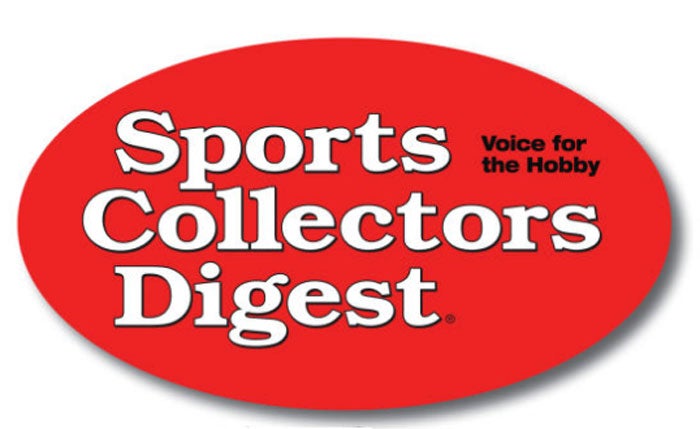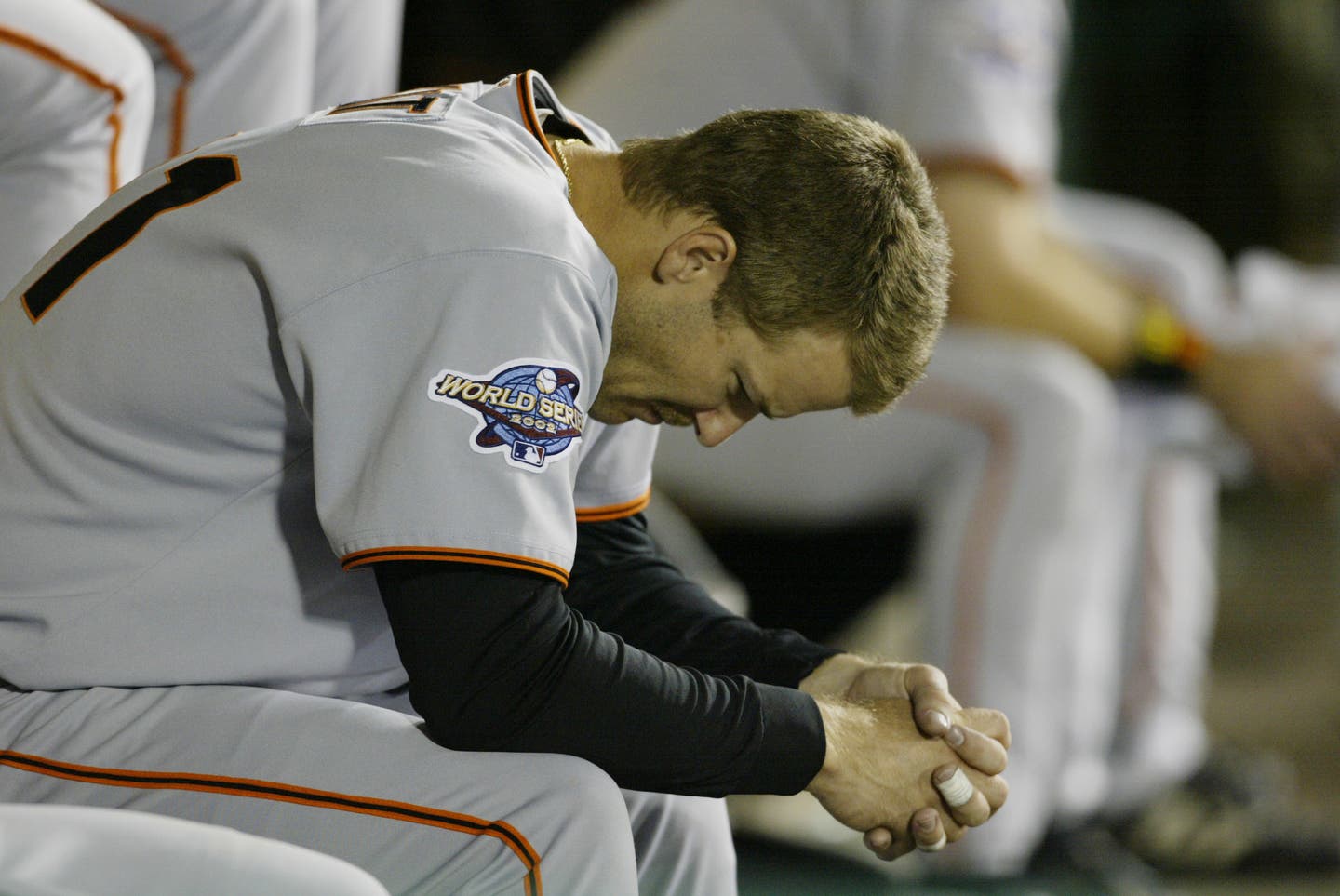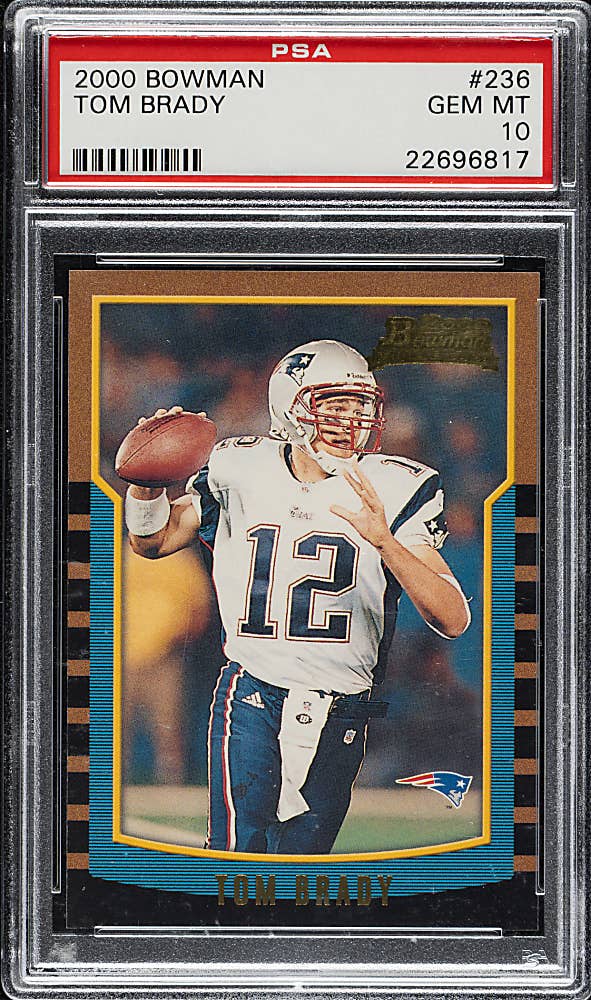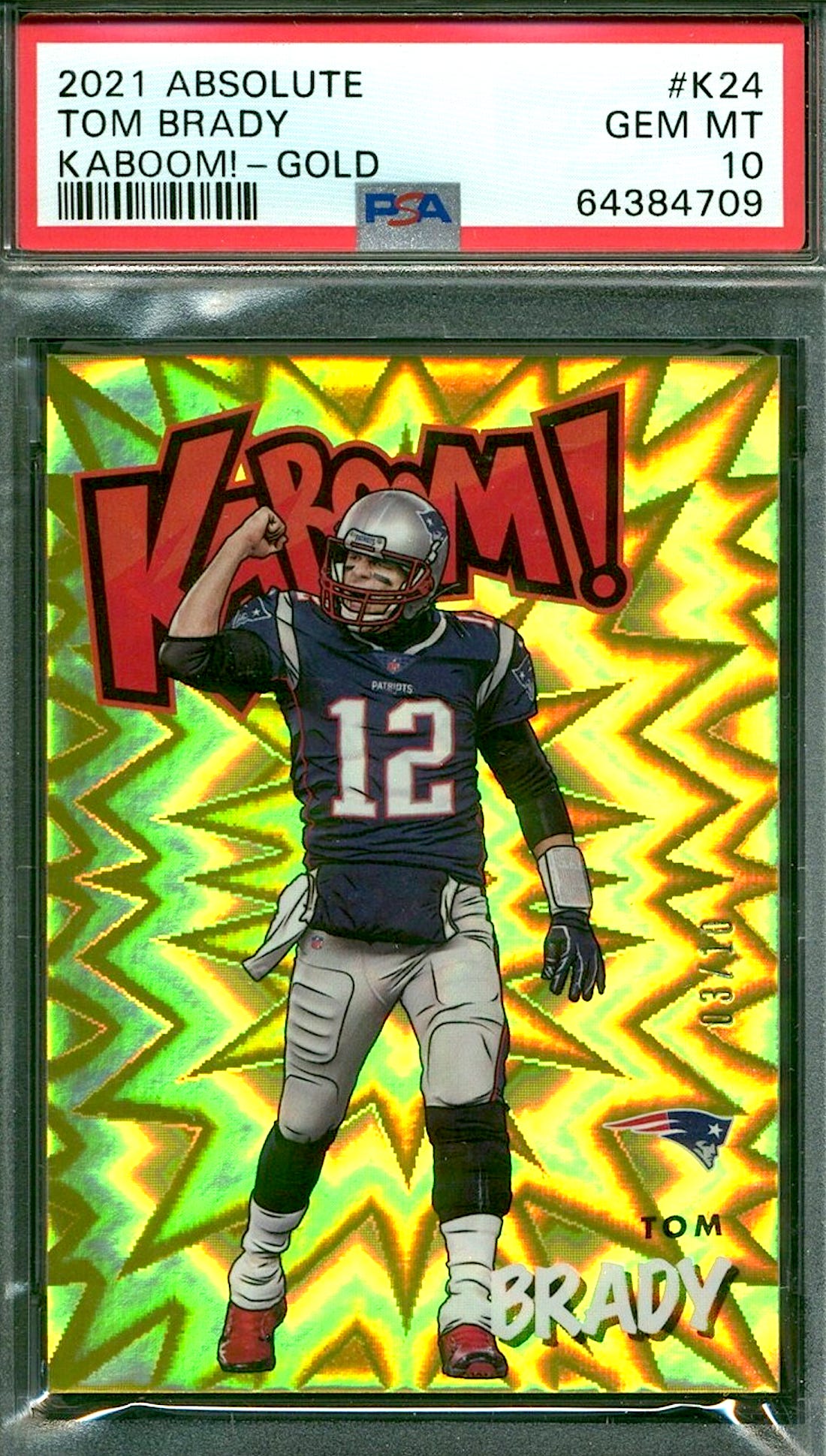Autographs
Former NFL QB Sean Salisbury shares fond memories of collecting favorite athletes, chasing his own football cards
Sean Salisbury was a three-sport star at Orange Glen High School in Escondido, Calif., but he chose the gridiron and played quarterback for the USC Trojans.
Salisbury was briefly with the NFL Seattle Seahawks and Indianapolis Colts, but initially made his mark in the Canadian Football League with the Winnipeg Blue Bombers. In 1988, Salisbury led Winnipeg to the CFL Grey Cup championship.
The quarterback then made his way back to the NFL and spent the most notable part of his career with the Minnesota Vikings between 1990-93.
Related Content:
What Salisbury did after his football career made him a star in certain circles. After starting on Comedy Central's wildly popular Battle Bots, he went on to become an NFL analyst for ESPN, appearing on all major programs, including SportsCenter and NFL Live.
He appeared in major motion pictures such as “The Longest Yard” and “The Benchwarmers,” both Adam Sandler productions, and still has a successful career in media.
In this exclusive interview with SCD's Tony Reid, the former college and pro quarterback turned media star talks about signing his first autograph in high school, his favorite athletes, and the desire to acquire each of his own trading cards.
As a high-level athlete, you have signed your name countless times. Do you remember the first time you were asked for your autograph?
“I was a sophomore in high school actually. I was fortunate to be a three-sport athlete and got a lot of coverage in Orange Glen High School in Escondido. You'll get younger junior-high kids and at the time, I was really good at baseball, playing varsity baseball as a freshman, and then also varsity basketball as a sophomore. It was an autograph basically from my basketball ability. It had nothing to do with football, because I didn't play tackle football until I got to high school. It was just a kid in junior high school, a kid who his family watched me play. They'd come to the basketball games, and it was the end of my sophomore year, and we were a really good team, and I made first-team all-league and … I remember a kid coming out of the locker room at the end of a game. I don't know the kid's name to this day, but I do remember it.
“At that point time, I didn't even know what kind of autograph I wanted to use. Nobody was asking me as an eighth grader, right? I'm the one looking around trying to find people's autograph to get myself. So he asked for it, and I signed a piece of paper. And at that point, I decided, you know what, hopefully I'll be good enough that I have to do this more than once, and I did. And you get to the point, ‘OK, what's going to be my staple? Is it a big S followed by the rest of it?’ … I signed the autograph. It's gotten better, [but] at that point in time, you realize, when you get autographs from other athletes or other people, it was like, ‘You know what, I'm going to try to perfect this. I'm going to try to make it really cool.’
“At that point in time, I was still kind of a little bit overwhelmed that, as this 15-year-old sophomore playing varsity basketball, some kid would want my autograph. But over the years, you know, you start to watch how people sign theirs and you learn and evolve. And I guess since probably my freshman or sophomore year in college, it's been the autograph that I've had my whole time. But that was it, first one [as a] sophomore in high school, and it was because of basketball.”
You also had an incredible basketball career …
“I miss it. People ask me all the time, ‘What's your favorite sport?’ ‘What do you miss most about playing pro sports?’ … I miss the competition, and I miss being around the people. But for me, it was basketball, just because I grew up such a Lakers fan and during those Lakers and Celtics rivalries and all that. … I just fell in love with it and it was the first sport I was recruited in. It was that and baseball. Football I watched and we played tackle football at the park, but I didn't know how to put pads on until I got to high school.
“… What I miss most about my career—not a paycheck, that's fine and dandy, money gets spent, sports has led me to everything else in my career—but I miss Friday night, I miss Tuesday and Friday nights. Tuesday is when we played our basketball games. I miss Friday football, but I really do miss … like we played against [former NBA player] Cliff Levingston, the great first-round pick out of Wichita State. … I would have played against Cliff Levingston, or when I played against Wayman Tisdale in high school or at an All-American camp. I missed those Friday nights in high school more than I miss anything else to do with sports. The first thing that comes to my mind when somebody ask is a loaded gym at my high school, at Orange Glen High School, and playing on a Friday night and that competition. I still miss that more than anything I do in any part of my sports career.”
You mentioned the Lakers. Growing up, which athletes inspired you? Did you have a sports card collection?
“I used to write to players. Actually, my girl, she collects. She's got me back into it. Now she's had a great collection. I grew up in a family where my dad was a stamp, marble and coin collector. I learned my dad had one of the greatest marble collections and stamp collections on the planet. So, I was late to the card party. I was in junior high and my dad was a construction worker, a city worker. I started writing letters to players. The first one responded, and then in an interview that I'd seen later on, he mentioned the card and that letter I'd sent him. It was Isaac Curtis, who played wide receiver for the Cincinnati Bengals. I watched the games with Kenny Anderson and that connection they had. I wrote him a letter, and he signed it and I got it back. That was my very first card.
“You start to get cards and go to games and I can remember I was at a spring training game in Arizona with my family and I went down to get Reggie Jackson's autograph. He was so busy he didn't sign mine at that time. I was heartbroken. Well, over the years, Reggie and I became friends. We were in the movie ‘Benchwarmers’ together, and I kidded him about it. I'm like, ‘Man, I hate Reggie Jackson,’ because I grew up watching from Oakland. I grew up a die-hard Red Sox fan, because that was in my family. My mom constantly reminded me about the Red Sox vs. Cardinals 1967 World Series. So I can tell you about every pitch in the 1975 World Series when I was 12 years old, from Ed Armbrister's bouncer outside of home plate to Bernie Carbo's home run that led to Carlton Fisk's [home run], all the history of it. I'm much bigger on the history of baseball and basketball. I can name the Pittsburgh Pirates We Are Family lineup, but I can't tell you the 15th touchdown pass that I threw in the NFL. That's what's crazy about this.
“Isaac Curtis was the very first card I got back, number 80 of the Cincinnati Bengals … so, I cherish that one. And over the years, you know, it kind of went away. I admired other people's collections, and I'm starting to get into baseball cards. When I collect, it would be more baseball cards than anything. Stamps and marbles, that was the start of it with my dad, and then it evolved. I love going through the old cards and reading the backs of baseball cards, but that was my first one. I guess it was my admiration for athletes.
“My dad was 82nd Airborne in the military, in the Army, so we moved around with his construction job and the rest. My very first basketball love was Bob McAdoo when he was with the Buffalo Braves. Those powder blue uniforms might have been the reason. The very first jersey I ever bought one of my kids was a Bob McAdoo number 11 Buffalo Braves jersey. Years later, I found it. It was a Mitchell and Ness, the Bob Mac new jersey number 11, and I loved him all the way through, even when he became a Laker coming off the bench. So that was my first love in basketball, even though I grew to evolve and love the Lakers, because Doc Buss is a USC guy.
“In baseball it was Pete Rose. My dad said, ‘If you want to play, play like him.’ And over the years, one of the great thrills in my life was that I became really good friends with Pete. I knew him, Pete and I shared some really good moments, private moments, talking about his career and his life, and I miss him. He was the way I was told to play.
“In football it was Broadway Joe. When I first started watching football, he was the guy. When I went to high school and finally played, I wore those old black shoes … the exact ones. Namath wore number 12, so I wore number 12. It was all because of Joe Namath. I wore the three-bar facemask like he did. I wore my towel like he did. I tugged on the front of my shoulder pads like he did. I did everything Joe Namath did, except have the Hall of Fame career. And I told him that years later, when he was a broadcaster, and he signed a piece of paper for me in my second year in the league that said, ‘Sean, I hope for you, for your career, what I had for mine,’ meaning, you know, all the fun and enjoyment, and anytime I interviewed Joe, to this day, there's no more gracious interview on the planet than Broadway Joe.
Also See: Chasing a Joe Namath rookie card
“I'm so grateful for my career. You know, sometimes you wish you'd had a Hall of Fame career, but I think about my favorite sports, I've been able to meet those heroes that I had. They were heroes to me. I was able to meet and become friends with Pete Rose, with Reggie Jackson, and then with the great Joe Namath.”
Your first card was a 1988 JOGO card up in Winnipeg with the Blue Bombers. You had two cards in the CFL in 1989, one in 1991 that was your first NFL and Minnesota Vikings card, and your official rookie card was in the Upper Deck 1992 set. Do you remember seeing yourself on a card for the first time?
“I felt like, ‘please don't let this be the only one.’ And then, as it went on, I would collect them and people, as you’re playing, they'll send you a box of them. People say, ‘Sean, I got your card.’ I said, ‘Well, don't sell it, because you're gonna have to pay somebody to take it off your hands!’ As an athlete, you always wanted to be on the cover of Sports Illustrated, right? … You start to think, you know, these cards are around and I know every player has cards, but it's still a fairly exclusive group, because you think about all the people that played. So, at that point, I think I just looked at it as an honor. I thought, this is really cool, because we went on to win the Grey Cup in ’88.
“I wish there were more people that said, ‘Hey, Sean, your cards are worth $10,000 now!’ That would be great. I think I have pretty much all of them, but there are maybe some I've missed, because I'll get people that will send 10 cards and you sign them, and still to this day, they will send them and I'm like, ‘Man, you guys must be awfully bored with your time.’ I send it back and sign them, because I don't take it for granted.
“But, yeah, I do remember the feeling when somebody handed me the first CFL card. … I'm not so sure that I didn't see my NFL card before I saw the CFL cards. … I mean, I saw them, and then they felt like they started to come in droves. But the first time I saw a card was when I was in the NFL, and then all of a sudden, oh, man, there's a CFL card and there's another one. So, yeah, it was really cool. Hell, I remember the first CFL card and the uniform and the game that we played in, because I remember the shoes and the stadium. I don't take that for granted, either. I know if you're [Tom] Brady or Aaron Rodgers or Patrick Mahomes, you've got four million of them over the course of time. I've probably got maybe a dozen of them and then a couple CFL cards. But I like them, and I don't take it for granted, because … when you're growing up as a kid, you don't really think, hey, one of these days they're going to have a card for me.
“I'm really proud of them. I can't imagine what it'd be like if you're one of these Hall of Fame players trying to track down every single card you've ever had that somebody's ever made of you. The people that do it like you for a living with the collectibles, I admire you guys. You guy's grind is crazy, and how you find these little tidbits and what they're worth? But yeah, I considered it an honor, and I do remember the very first time I saw it. So this is really cool.”
So 38 is the number. You've been on 38 different trading cards.
“How do I get them all? I would love to get all 38. … It'd be great to have. What I'd love to do is get all 38 and stick them in a frame, by a jersey of mine. That'd be awesome. Yeah, right in my office.”
There are always some fun facts on the backs of cards. If you could choose one fact or one stat on the back of your card, what would you want fans and the world to know about your career?
“I guess for me, it wouldn't even be a stat. I got a master's degree at 60 years old. How's that? That's probably my proudest thing. I made a promise to my mom and dad at my graduation at SC. I was a good student, but you get a little lazy and at the graduation, I thought to myself, you know what, I should have been one of the valedictorians up there. I should have worked. … While I did well, I didn't apply myself as much as I could have, and I told my parents on that day, at graduation, I said I'm going to get a master's at some point. Now, both my parents are gone. My dad had passed away before I started. My mother was alive when I started my masters at Texas A&M Sports Management, but I lived up to that promise. I'm proud of that because I'm already into my career. I don't even know if I'll ever use it, but I made a promise and I lived up to it.
“I would have loved to see how my career would have turned out, because knee injuries are different now than they were then. Yeah, I would have loved to see what my career would have been had I had the same exact mobility and had been able to go through my career without shredding my knee twice. I would have loved to see what that looked like.”







